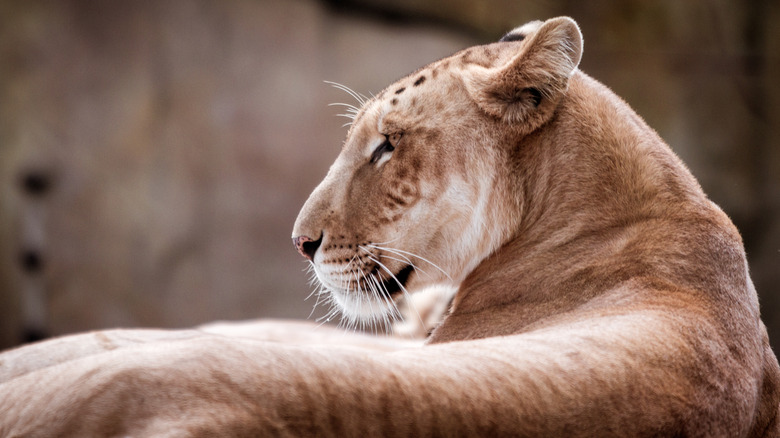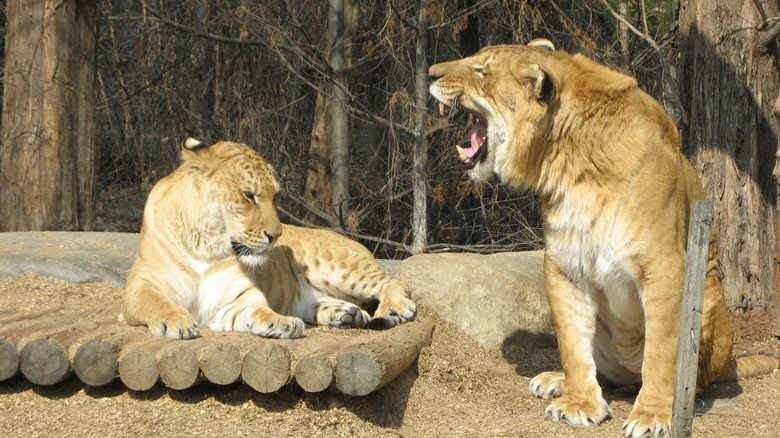
Numerous domestic animals are crossbred to create new breeds. For example, in the canine world, a Siberian retriever results from crossing a Siberian husky with a Labrador retriever, while a cockapoo is a mix of a cocker spaniel and a poodle. There are also various cat hybrids, such as a Bengal cat, which is a cross between a domestic cat and a small Asian leopard, or a caracat, created by crossing a domestic Abyssinian with a wild caracal. When it comes to larger animals, ligers and tigons are also hybrids. Both arise from crossing lions and tigers, differing only in the male–female pairing.
To breed a liger, a male lion pairs with a female tiger, whereas a male tiger and a female lion produce a tigon. Since lions predominantly inhabit Africa and tigers are mostly found across Asia, their natural habitats do not overlap. Consequently, ligers and tigons do not naturally occur in the wild; their breeding is facilitated by humans, either accidentally in zoos or intentionally for entertainment and profit. This practice is not new: the first known instance of breeding a liger in captivity likely occurred in the late 18th century. Despite their similarities, ligers and tigons each possess distinct characteristics.
The characteristics of a liger
A liger inherits more characteristics from its lion father than its tiger mother, but it exhibits features of both. Its fur can range from beige to tawny-orange, with faint spots on its stomach and stripes on its back varying from sandy to dark brown or black. Male ligers may roar and possess a short, lion-like mane.
Ligers can be larger than either parent, measuring approximately 10 to 12 feet long and weighing between 710 and 1,210 pounds. This crossbreed is prone to obesity and gigantism, a condition where excessive growth hormone causes it to grow larger than expected. Biologists suspect that this may result from the liger lacking certain genes that limit growth, with some ligers reportedly weighing over 2,000 pounds.
Interestingly, a liger’s bite force is about 900 pounds per square inch (psi), comparable to the 1,000 psi bite force of some adult lions. It consumes up to 50 pounds of meat per meal, typically including cattle, deer, and wild boar. Throughout its 13-to-18-year lifespan, ligers are generally docile and gentle. Additionally, they have a fondness for water — a trait inherited from wild tigers but not lions — although it may take some time for them to embrace it.
The characteristics of a tigon

Similarly, a tigon takes on more features from its tiger father than its lion mother, though it exhibits traits from both. Fewer tigons exist compared to ligers, resulting in less available information about this hybrid. However, the animal community has gathered data on its appearance and size. A tigon typically has a darker orange color, resembling its tiger father more than its lion mother, with a usually white belly. The spots on its belly, head, and feet, and the stripes on its back, tail, and legs, are darker than a liger’s markings.
A tigon grows to about 4 to 9 feet long and weighs between 200 and 500 pounds, making it smaller than a liger — with a bite force of about 400 to 450 psi — and about the same size or smaller than its tiger parent. Scientists believe that tigons never exceed the size of their tiger and lion parents because both parents pass down growth-limiting genes. Additionally, tigons suffer from more chronic health issues and disabilities from birth compared to ligers, leading to a higher mortality rate among cubs and mothers due to their large size at birth.







